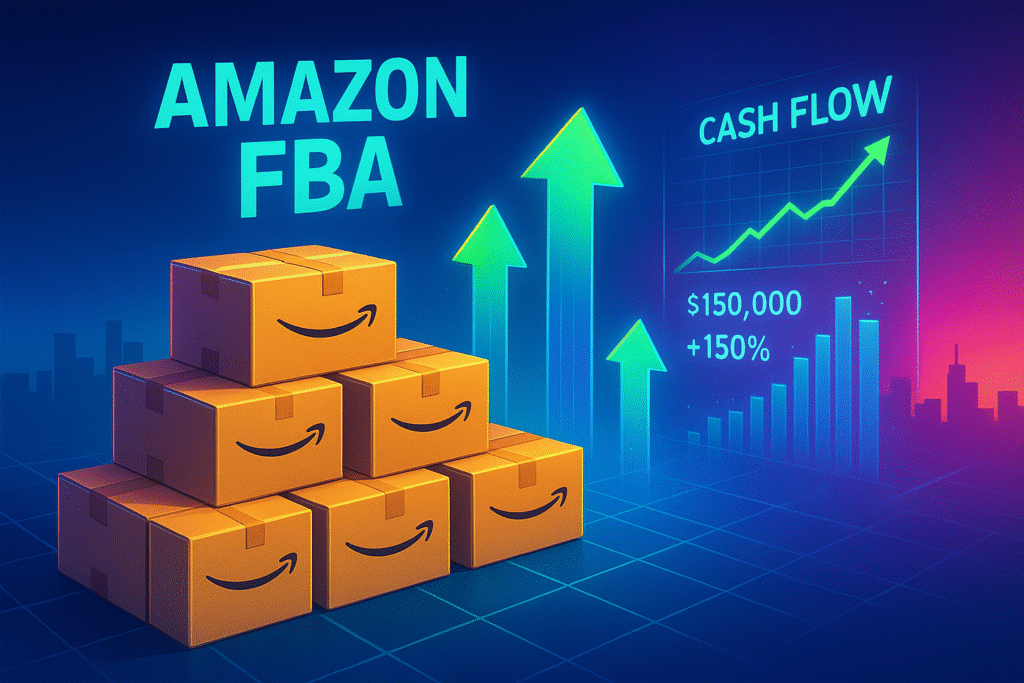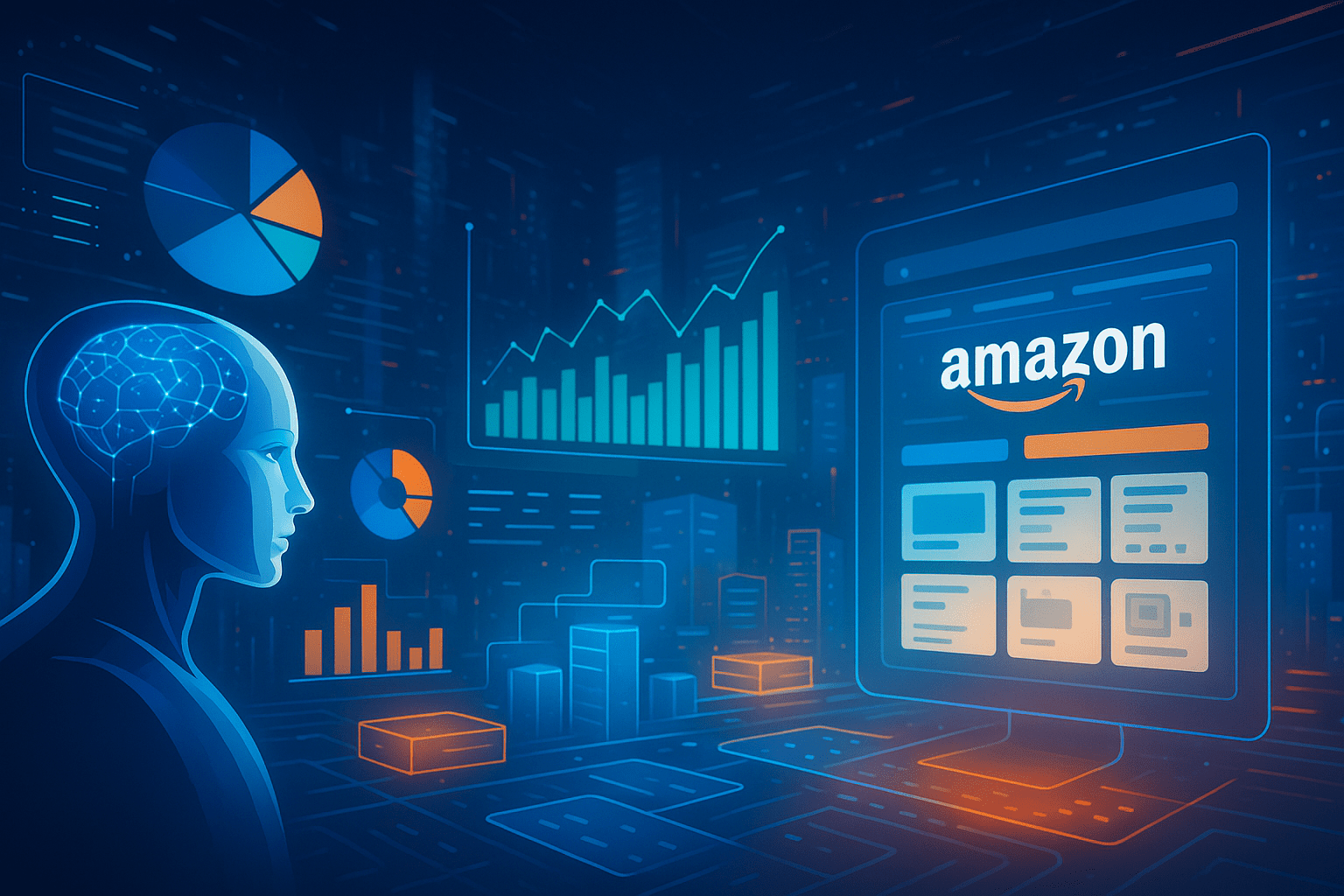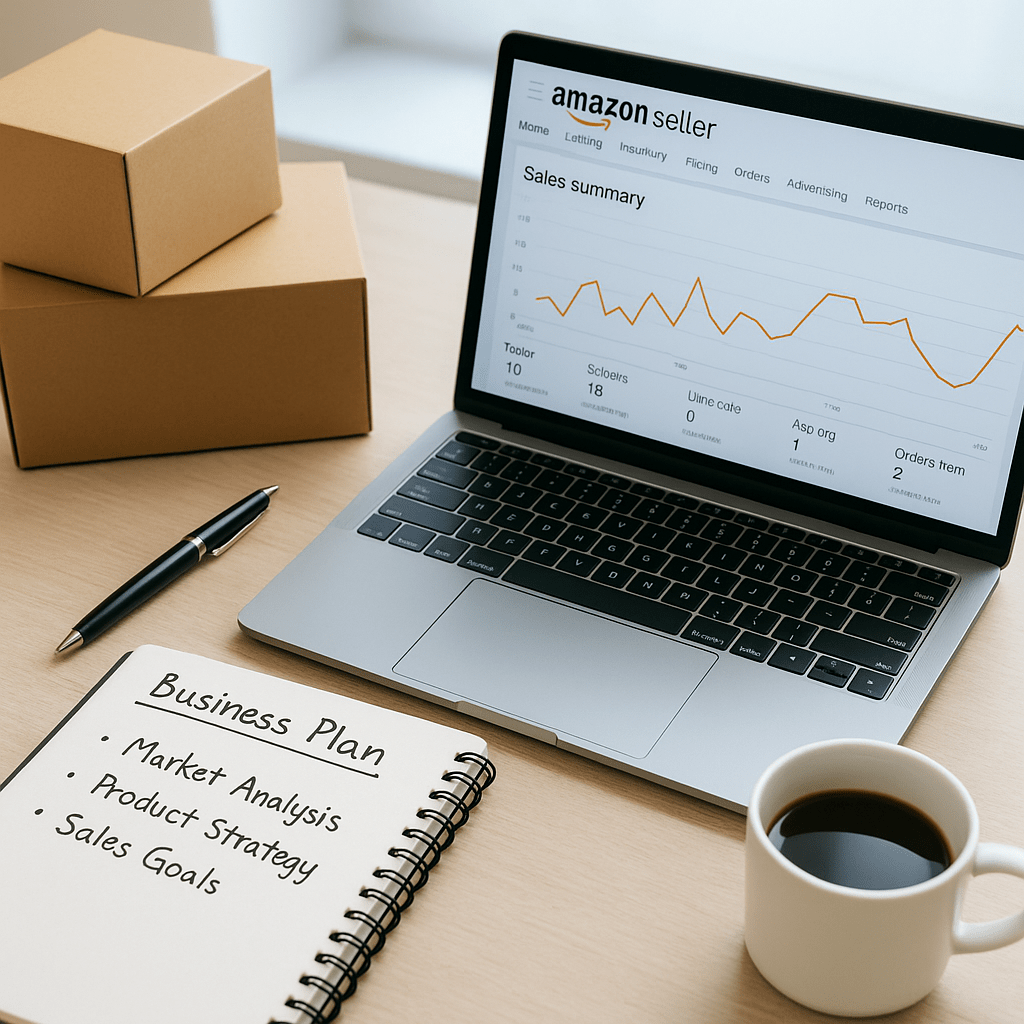Amazon FBA Growth: Why Most Sellers Fail at Scaling and How to Avoid Their Mistakes
Amazon FBA Growth: Why Most Sellers Fail at Scaling
Introduction:
Amazon has transformed the way entrepreneurs launch and scale businesses. From students to CEOs, millions of sellers have entered the platform with the hope of building a profitable brand. Some succeed in scaling to seven figures and beyond, but the hard truth is that most never experience sustainable Amazon FBA growth.
Why? The difference lies in how sellers prepare for scaling. Many start strong with a winning product, but growth stalls once they try to expand. Challenges like cash flow shortages, poor advertising strategies, inventory mismanagement, and a lack of long-term planning create bottlenecks that can collapse the business.
The purpose of this guide is to break down why most Amazon sellers fail at scaling and how to avoid their mistakes. Over the course of this article, we’ll explore:
- The foundations of FBA growth and what scaling truly means
- Why sellers fail (and what Reddit discussions reveal)
- Cash flow mismanagement — the #1 killer of growth
- Building systems to manage advertising, inventory, automation, and diversification
- Long-term strategies for survival and dominance in a competitive marketplace
This is not a surface-level overview. Instead, you’ll get a step-by-step, practical, and real-world roadmap that Amazon sellers, small-business owners, and brand founders in the USA can apply immediately. Whether you’re a beginner dreaming of your first product launch or an established seller aiming for multichannel expansion, this master guide gives you the clarity and strategies you need.
By the end, you’ll understand the mechanics of Amazon FBA seller growth and have a clear plan for avoiding the pitfalls that trap 80% of sellers.
Let’s begin by understanding what growth actually means inside the Amazon ecosystem.
Understanding Amazon FBA Growth:
Most people think “growth” simply means “selling more units.” That’s not wrong, but true FBA growth is much deeper. It requires systems, brand development, financial discipline, and strategic scaling.
The Three Stages of FBA Growth
- Launch Phase (0–6 months):
- Seller focuses on product research, launching, and gathering reviews.
- Revenue often reinvested heavily in PPC ads.
- Profit margins are small, sometimes negative.
- Seller focuses on product research, launching, and gathering reviews.
- Stabilization Phase (6–18 months):
- Advertising costs normalize.
- Product reviews increase trust.
- Sellers begin to experience consistent monthly sales.
- Cash flow challenges start to appear.
- Advertising costs normalize.
- Scaling Phase (18+ months):
- Sellers expand SKU catalog.
- Explore Amazon external traffic sources (social media, Google ads).
- Consider multichannel eCommerce growth.
- Begin outsourcing and automating tasks.
- Sellers expand SKU catalog.
Scaling is not about selling more of the same product only — it’s about sustainable expansion across multiple fronts.
Growth Metrics Sellers Must Track:
To measure Amazon FBA growth, rely on numbers, not assumptions. Key metrics include:
- Revenue Growth Rate → Are sales increasing month over month?
- Profit Margins → Is growth sustainable or just inflated by ad spend?
- Advertising ROAS (Return on Ad Spend) → How efficient is your PPC?
- Customer Lifetime Value (CLV) → Are you building repeat customers?
- Inventory Turnover → Are you balancing stockouts and overstocking?
Failing to track these metrics is a major reason why Amazon sellers fail.
Why “FBA Growth com” and Community Insights Matter:
Sellers often look to platforms like “FBA Growth com” and forums such as Amazon FBA failures Reddit to share their experiences. These communities reveal a consistent pattern:
- Sellers who scale successfully document their data, reinvest wisely, and plan for the long term.
- Sellers who fail often chase “hot products,” underestimate costs, and neglect strategy.
Learning from others’ mistakes can save you years of trial and error.

The Real Meaning of Scaling:
Scaling isn’t just about adding SKUs. It includes:
- Expanding into multiple categories
- Building a recognizable brand identity
- Exploring Amazon product diversification
- Establishing reliable supplier relationships
- Investing in Amazon automation tools to reduce manual work
In short: growth = selling; scaling = systemizing
Why Most Amazon Sellers Fail at Scaling:
Now that we understand what true Amazon FBA growth means, let’s dig into why so many sellers fail when attempting to scale.
Lack of Financial Planning:
Many sellers underestimate how much money it takes to grow. While launching a single SKU may only need a few thousand dollars, scaling requires tens of thousands for inventory, ads, and staffing. Without strong Amazon cash flow management, sellers run dry quickly.
Example:
A seller launches a product that generates $20,000/month. Excited, they invest heavily in ads but don’t leave enough budget for reordering inventory. By the time they reorder, they run out of stock and lose rankings. Revenue plummets.
Over-Reliance on One Product:
Far too many sellers put all their eggs in one basket. This works during the launch phase, but long-term success requires Amazon product diversification.
Why it fails:
- Competitors undercut pricing.
- Seasonal demand dries up.
- Policy changes affect category eligibility.
Sellers who fail to diversify face massive risks.
Weak Amazon Advertising Strategy:
Scaling requires a clear Amazon advertising strategy. Many sellers simply increase ad spend without optimizing campaigns. The result: costs skyrocket, but profit margins vanish.
Mistake Patterns:
- No keyword research
- Ignoring negative keywords
- Poor bid management
- Not exploring Sponsored Display or Video Ads
Without Amazon PPC optimization, sellers burn cash instead of growing.
Poor Inventory Management:
Stockouts destroy ranking, while overstocking kills cash flow. Many Amazon sellers fail simply because they can’t balance supply and demand.
Scaling challenge: Amazon’s inventory storage fees rise every year. Sellers who don’t master Amazon sales forecasting either waste money or miss sales opportunities.
Neglecting Brand Building:
Short-term sellers think in terms of units sold; long-term sellers think in terms of brand equity. Without brand identity, you’re just another commodity seller vulnerable to copycats.
Amazon brand building tips:
- Premium packaging
- Storytelling in product descriptions
- Building an email list for off-Amazon traffic
Failing to build a brand ensures that growth stalls after the initial success.
Ignoring Automation and Outsourcing:
Solo sellers hit a ceiling. Tasks like customer service, PPC optimization, and inventory management consume time that could be spent on strategy. Without Amazon business outsourcing and automation, sellers burn out before scaling.
The Trap of Poor Cash Flow Management:
Cash flow is the lifeblood of any business. You can have great products and strong demand, but without money in the bank, scaling is impossible.
Why Cash Flow Management is Critical:
- Amazon pays sellers with a delay (typically every 14 days).
- Inventory purchases often require 30–50% upfront payments.
- PPC and advertising costs are deducted daily.
This creates a dangerous cycle: sellers are spending today but getting paid weeks later. Without reserves, growth stalls.
Common Cash Flow Mistakes:
- Overspending on Ads: Sellers pour money into PPC without calculating ROI.
- No Emergency Reserve: All profits are reinvested, leaving no buffer for slow months.
- Neglecting Profit Margins: Sellers focus on revenue instead of actual net profit.
Solutions and Best Practices:
✅ Amazon profit margin tips:
- Always maintain 20–30% net profit margins after ads and fees.
- Use financing only when ROI is predictable.
- Monitor cash flow weekly, not monthly.
✅ Operational practices:
- Negotiate supplier terms (partial payments, extended credit).
- Diversify suppliers to avoid production bottlenecks.
- Invest in accounting tools to forecast 90-day cash flow.
✅ Strategic practices:
- Expand slowly — scale one product line before jumping to five.
- Protect margins by regularly renegotiating logistics and packaging costs.
The Role of Amazon PPC Optimization:
When sellers talk about scaling, advertising is usually at the center of the conversation. You cannot achieve true Amazon FBA growth without a strong Amazon advertising strategy. Unfortunately, this is also where most sellers lose money.
Why PPC Is Essential for Scaling:
- Organic Ranking Boost: Amazon rewards products that generate sales through ads, helping improve organic placement.
- Data Gathering: PPC campaigns provide keyword and customer behavior insights.
- Competitive Advantage: Without ads, competitors with optimized campaigns will outbid and outrank you.
Scaling isn’t just about spending more on ads — it’s about spending smarter.
Amazon PPC Optimization Tips:
- Start with automatic campaigns to gather data.
- Transition to manual campaigns targeting high-converting keywords.
- Monitor ACOS (Advertising Cost of Sales) weekly and set benchmarks.
- Use Sponsored Brands and Video Ads to enhance visibility.
- Leverage data-driven decisions Amazon dashboards for bid adjustments.
Scaling requires turning PPC from a cost center into a predictable profit driver.
Common PPC Mistakes Sellers Make:
- Overbidding on Broad Keywords
Sellers chase high-volume search terms, but they convert poorly, draining budgets. - Ignoring Negative Keywords
Without filtering out irrelevant searches, ad spend is wasted on traffic that never converts. - Lack of Campaign Segmentation
Running one large campaign instead of segmenting branded, competitor, and category keywords reduces clarity. - No Regular Optimization
PPC isn’t “set it and forget it.” Campaigns need weekly adjustments.
Amazon Inventory Management & Forecasting:
One of the most common Amazon seller scaling challenges is inventory. Stockouts can wipe out months of ranking progress, while overstocking ties up cash and increases storage fees.
The Dangers of Stockouts:
- Loss of Best Seller Rank (BSR)
- Declining organic visibility
- Competitors capturing your market share
The Cost of Overstocking:
- Long-term storage fees from Amazon
- Reduced capital available for PPC or product launches
- Increased risk if product demand slows
Amazon Inventory Management Best Practices:
✅ Amazon sales forecasting:
- Use historical sales data and seasonal trends.
- Apply forecasting tools integrated with Amazon Seller Central.
- Always maintain at least 60–90 days of inventory.
✅ Supplier Coordination:
- Negotiate shorter lead times.
- Work with backup suppliers to avoid production delays.
✅ Operational Tips:
- Send inventory in smaller, staggered shipments to reduce risk.
- Track FBA storage fee thresholds and avoid penalties.
Smart inventory management is not optional. It’s the backbone of sustainable Amazon FBA seller growth.
Brand Building and Long-Term Growth Beyond Amazon:
Sellers who succeed long-term understand that they aren’t just selling products — they’re building brands. Without a brand, you’re just another listing in Amazon’s massive catalog.
Why Brand Building Matters:
- Customer Loyalty: People buy repeatedly from brands they trust.
- Defensibility: Competitors can copy your product but not your brand story.
- External Growth: A strong brand makes it easier to expand into retail and other eCommerce platforms.
Amazon Brand Building Tips:
- Premium Packaging
Creates a memorable unboxing experience. - Enhanced Brand Content (A+ Content)
Professional visuals and storytelling differentiate you from generic sellers. - Email & Community Building
Use packaging inserts to drive traffic to your brand website. - Social Proof
Encourage authentic reviews and leverage social media presence.
Beyond Amazon: Multichannel Vision:
- Launch a Shopify store for direct customer relationships.
- Explore multichannel eCommerce growth by listing on Walmart, eBay, or Etsy
- Build a content-driven ecosystem (blogs, videos) for organic external traffic.
Scaling is impossible without moving from “product seller” to “brand owner.
Leveraging Automation & Outsourcing:
As revenue grows, complexity multiplies. Sellers who try to handle everything manually burn out and stall. The smartest move is to integrate Amazon automation tools and use Amazon business outsourcing for repetitive tasks.
Why Automation Matters:
- Reduces human error
- Saves time on repetitive tasks
- Allows focus on strategic decisions
Areas for Automation:
- Repricing tools → stay competitive without manual adjustments
- Review request automation → boost social proof consistently
- Inventory alerts → prevent stockouts
- PPC management software → optimize bids automatically
Areas for Outsourcing:
- Customer Service: Hire VA teams to respond to queries quickly.
- Graphic Design & Copywriting: Professional listings convert better.
- PPC Campaign Management: Specialists can improve ROI faster.
Supply Chain Coordination: Outsource logistics management to free up time.

The CEO Mindset:
Scaling requires shifting from operator to strategist. Sellers who treat Amazon as a “job” remain stuck. Sellers who adopt a CEO mindset — delegating and focusing on vision — are the ones who achieve true Amazon FBA growth.
Amazon Product Diversification: Reduce Dependency, Increase Security:
Many sellers fail because they rely on one hero product. While this might work initially, competition and price wars can erode margins.
✅ Diversification Strategies:
- Product Line Expansion
Launch variations (sizes, colors, bundles). - Niche Expansion
If you sell yoga mats, diversify into yoga blocks, straps, and apparel. - Private Label Extensions
Build branded ecosystems around customer lifestyle needs. - Seasonal & Evergreen Mix
Avoid cash flow dips by balancing seasonal sellers (Christmas decor) with evergreen products (kitchen tools).
By diversifying, you reduce risk, stabilize revenue, and make Amazon FBA growth sustainable
How to Avoid Amazon Suspension While Scaling:
Nothing kills FBA growth faster than an account suspension. Many sellers ignore compliance until it’s too late.
🔹 Common Suspension Triggers:
- Selling restricted products
- Review manipulation or fake feedback
- Incomplete tax compliance
- Intellectal propert violations
- Late shipments or poor customer metrics
🔹 Prevention Tips:
- Regularly audit ASINs for compliance.
- Monitor Seller Central notifications daily.
- Register your brand with Amazon Brand Registry.
- Document supply chain transparency.
👉 Think of compliance as “insurance” for your Amazon business.
Conclusion: Building Unstoppable Amazon FBA Growth
Scaling on Amazon isn’t about luck. It’s about strategy, discipline, and long-term thinking. Most sellers fail because they chase shortcuts, ignore financial discipline, or rely too heavily on Amazon’s system.
To avoid their mistakes:
- Master cash flow management.
- Diversify products and channels.
- Optimize PPC and drive external traffic.
- Use automation and outsourcing for efficiency.
- Protect your account with compliance.
👉 If you’re serious about Amazon FBA growth, treat your business like a brand, not a side hustle. Comment below with your scaling challenges or share this guide with other sellers—it could save someone’s business.
Why do most Amazon sellers fail at scaling and how to avoid their mistakes?
Is Amazon FBA growth still possible in 2025?
What is the biggest Amazon seller scaling challenge?
How to avoid Amazon suspension when scaling?
What are Amazon profit margin tips?
What’s the safe profit margin for sustainable FBA growth?
Is FBA growth or tools worth the cost?
What’s the role of brand building in Amazon seller growth?
Recent Posts
- All Post
- Amazon Compliance
- Amazon FBA Guide
- amazon market analysis
- Amazon PPC
- Amazon Stock
- Amazon Tools
- Business Strategy
- Ecommerce News & Analysis
- Full Account Management Services
- Guide
- Guide 2025
- News
- News 2026
- PPC Services
- Prime day
- Stories
- Team Memebers
- Technology and Digital Services
- Top Agencies
- Top PPC tools



Get a Quick Solution
Need help fast? Our expert team is here to provide you with efficient and reliable solutions tailored to your needs. Don’t wait—reach out today!
Categories
- Amazon Compliance (5)
- Amazon FBA Guide (6)
- amazon market analysis (2)
- Amazon PPC (30)
- Amazon Stock (1)
- Amazon Tools (1)
- Business Strategy (12)
- Ecommerce News & Analysis (6)
- Full Account Management Services (58)
- Guide 2025 (20)
- News 2026 (12)
- PPC Services (58)
- Prime day (2)
- Technology and Digital Services (1)
- Top PPC tools (1)
Subscribe for Growth Tips, Seller Hacks & eCom Wins


